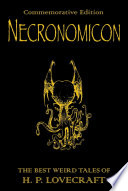-
-
Shelvist
I've been a bit quiet for the last couple of weeks. Now I can reveal why!
All my spare time has been taken up building Shelvist (well, that and looking after a 4-month old). It's a way of keeping track of which books you have read, which ones you are currently reading and which ones you want to read. That's it.
Just over a year ago, I started listening to a lot of audiobooks and, 12 months after I subscribed to Audible, I decided I wanted to see just how many books I'd read*. All the existing book tracking sites (e.g. Shelfari, Goodreads) focus on recommending, rating, reviewing which just seemed like hard work.
Building this was also a chance to learn some new tech. I've been wanting to play with CakePHP for a while so this seemed like the best opportunity. It's been a while since I used any kind of framework and I've never used a PHP MVC framework (although I did build one last year as an intellectual exercise).
I got over 90% of the site built in spare time over about 5 days and most of that was spent just reading the CakePHP docs. The reason for the lengthy delay between initial build and launch is down to that last 10%. As often happens with frameworks, nearly everything you'd ever need to do is bundled into some nice, easy to access functionality. That is, after all, kinda the point of a framework. It's the stuff that makes your product or website unique that proves trickier. I won't go into any details just now although I might come back to it in a later post.
More later, first of all, go shelve some books: Shelvist.
-
Scoped Style
I couldn't let it lie. The nifty JavaScript from the previous post was all well and good but I had to have a go at jQuery plugin-ifying it. It has been Enpluginated.
Your options now are simple:
- Have a look at a demo
- Check out the source on GitHub
- Download it and start scoping some styles.
If you still have no idea what I'm talking about, you can read about the attribute. There are still a couple of bugs when the scoped blocks are deeply nested within other scoped areas so I'm hoping someone with a keen sense of how to straighten out Webkit oddness can help. When browsers don't implement functionality, it's a bit tricky to guess what they'd mean.
Aside from that, it's cross-browser (IE7+) compatible and ready to use. I'm interested to know if anyone finds it useful or finds any odd combinations of styles that don't scope nicely.
-
CSS Scoped
One of the things in HTML5 that caught my eye a while back was the new 'scoped' attribute for style tags. The idea of it is that you can include a style element mid-document, mark it as scoped and its declarations will only apply to the style elements parent element and its child elements. The styles won't affect anything outside this. The biggest problem with bringing in this attribute is that it's not backwards compatible. If you include a style block mid-page, its declarations will be applied to ever element whose selector matches, inside or outside scope. It is anti-progressively enhancable. This means that designers and developers can't start using it until there's enough support. What we need is another of those JS tricks to make it usable.
My first attempt at solving this problem with JS involved generating a unique class, adding it to the parent element and then parsing the style blocks using JSCSSP so that I could rewrite them with the new class to add specificity. This approach only worked for the most basic declarations, unfortunately. The parser worked perfectly but there's a lot of detail in CSS specificity that mean this would be a much larger problem than I thought.
My second attempt involved:
- Allowing the style blocks to affect everything on the page (at which point, the elements in-scope look right, those out-of-scope look wrong)
- Using JS to read the current computed styles of each element in-scope and copy them to a temporary array
- Emptying out the scoped style element (in-scope look wrong, out-of-scope looks right)
- Copying the styles back from the temporary array onto each element
This worked great unless you had more than one scoped block – step 1 allowed scoped styles to affect each other.
The current attempt involves temporarily emptying all other scoped styles before taking the computed styles from a block. I'm now just thinking that this method might not work if you have multiple scoped blocks within the same context. Oh well, there's something to fix in the future.
This is where I'm at just now.
Yes, it's a mess, yes the JS is scrappy and yes, it doesn't currently work in IE but I'll get round to that next. It took long enough to get it working in Firefox as there's no simple way to convert a ComputedCSSStyleDeclaration to a string in Mozilla unlike Webkit's implementation of cssText or IE's currentStyle. I might even make it into one of those new-fangled jQuery plugins everyone's using these days.
-
jQTouch Calendar Extension

I needed to build an offline calendar in jQTouch for a project and found this particularly nice-looking jQTouch iCal project by Bruno Alexandre. Unfortunately, it required a server connection.
A day later and I've pulled the thing apart, refactored and rebuilt into a shiny jQTouch extension (still using the original project's CSS). It's built for Mobile Safari but still looks good in other webkits.
Grab the code from the GitHub repository






